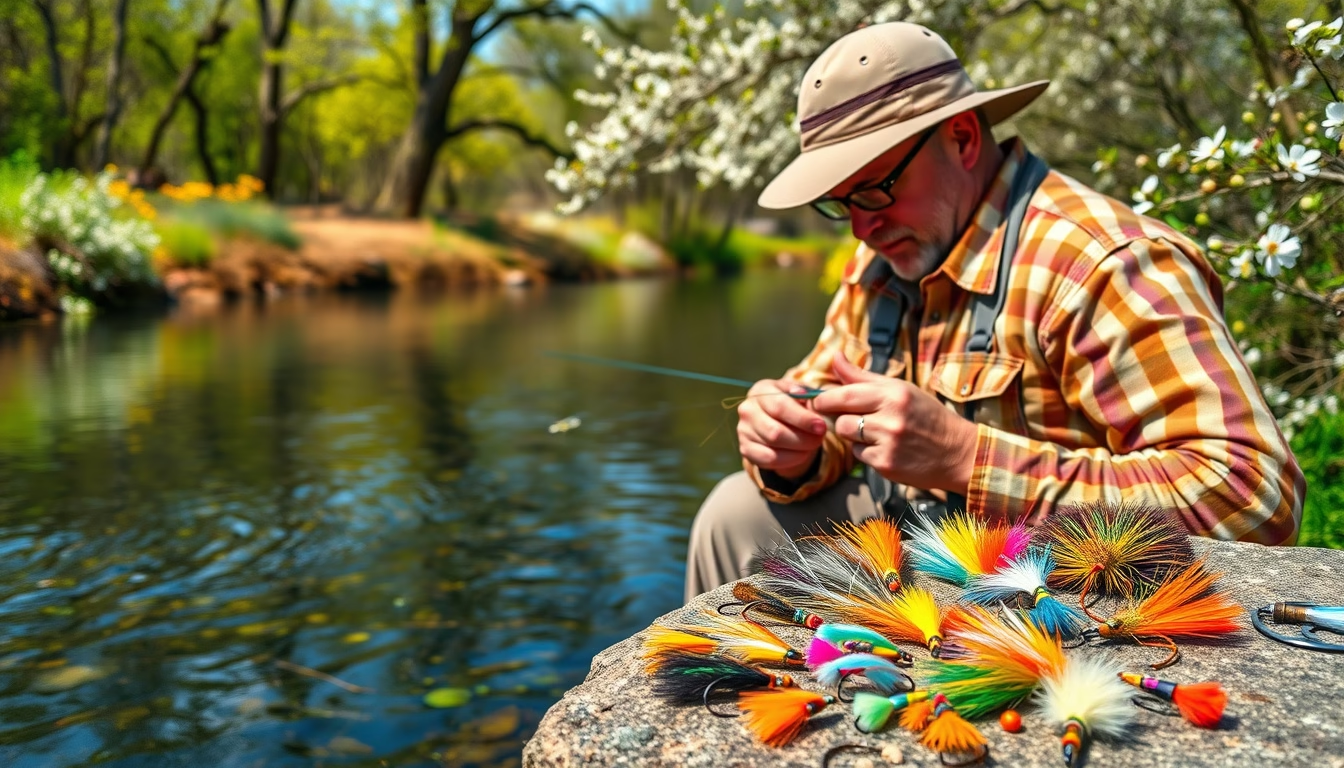
Master Spring Fishing: 3 Easy Fly Patterns You Can Tie in Minutes!
On March 23, 2025 by Andy FordSpring is a magical time for anglers as the fish become more active and the waters come to life.
As temperatures rise, it’s essential to adapt your fishing strategies and techniques, especially when it comes to using flies.
Tying your flies not only saves you money but also allows you to customize patterns that can target the fish species in your local waters.
In this article, we’ll explore three easy-to-tie fly patterns that are perfect for spring fishing.
These straightforward patterns require minimal materials and time yet are highly effective in enticing trout and other freshwater species.
Whether you’re a seasoned fly tyer or just starting out, you’ll find these patterns accessible and rewarding.
Let’s dive in!
The Complete Guide to Minnesota Walleye Fishing

Key Takeaways
- Spring fishing is accessible to beginners with quick and easy fly patterns.
- The article features three specific fly patterns: Cased Caddis, Smoky Mountain Palmer, and Holo Midge.
- Each fly pattern requires minimal materials and can be tied in just minutes.
Introduction to Spring Fly Patterns
### Introduction to Spring Fly Patterns
As spring arrives, fly anglers are eager to capitalize on the active insect life that emerges as the weather warms.
In the article ‘Tying Tuesday: Easy-to-Tie Spring Flies,’ readers are guided through the process of tying three simple yet effective fly patterns perfect for this vibrant season.
Designed for newcomers as well as seasoned veterans looking for a quick tie, these patterns can be accomplished in just a few minutes and require no advanced skills.
The first featured pattern is the Cased Caddis Imitation by Cheech at Fly Fish Food.
This enticing fly mimics the cased caddis larvae, a staple for fish in the spring.
Made with a size 14 barbless black nickel hook, a
3.2mm black slotted tungsten bead, and fluorescent green thread, this pattern’s long dubbing fibers are tied to resemble a realistic tail, ensuring it captures the attention of hungry trout.
Next up is the Smoky Mountain Palmer Fly crafted by Matt O’Neal of Savage Flies.
This classic pattern utilizes palmered hackle, providing excellent buoyancy.
Ideal for mountain streams, it allows anglers to keep nymphs submerged while presenting a visible fly.
Constructed on a 1X-long dry-fly hook (size ranges from 12 to 16), this fly employs rusty orange thread and golden pheasant tippets to form an enticing tail.
Lastly, the Holo Midge by Tyler from AvidMax stands out as a straightforward and effective midge imitation.
Perfect for anglers targeting fish in tailwaters, it employs a 2X-short curved nymph hook available in sizes 16-22 and features a 5/64-inch black tungsten bead for added weight.
The body composition includes Opal Mirage Flashabou and fluorescent white Antron Yarn which create an appealing wing, enhancing visibility in the water.
All three patterns highlighted in this article underscore the importance of accessibility for beginner tiers while simultaneously offering practical solutions for various fishing environments.
As you gear up for spring fishing, these easy-to-tie fly patterns will surely enhance your tackle box and improve your success on the water.
Step-by-Step Guide to Tying Each Fly
To tie the Cased Caddis Imitation, start by securing the size 14 barbless black nickel hook in your vise.
Attach the fluorescent green thread and wrap it to create a foundation for the body.
Next, take the long dubbing fibers, ensuring they are evenly distributed, and form a tail that resembles the natural cased caddis.
Slide on the
3.2mm black slotted tungsten bead and secure it tightly to the hook.
Finally, wrap the thread back to the base of the tail and finish your fly by creating a neat head before cutting the excess thread.
This fly is not only easy to tie, but its realistic appearance will attract spring trout effectively.
